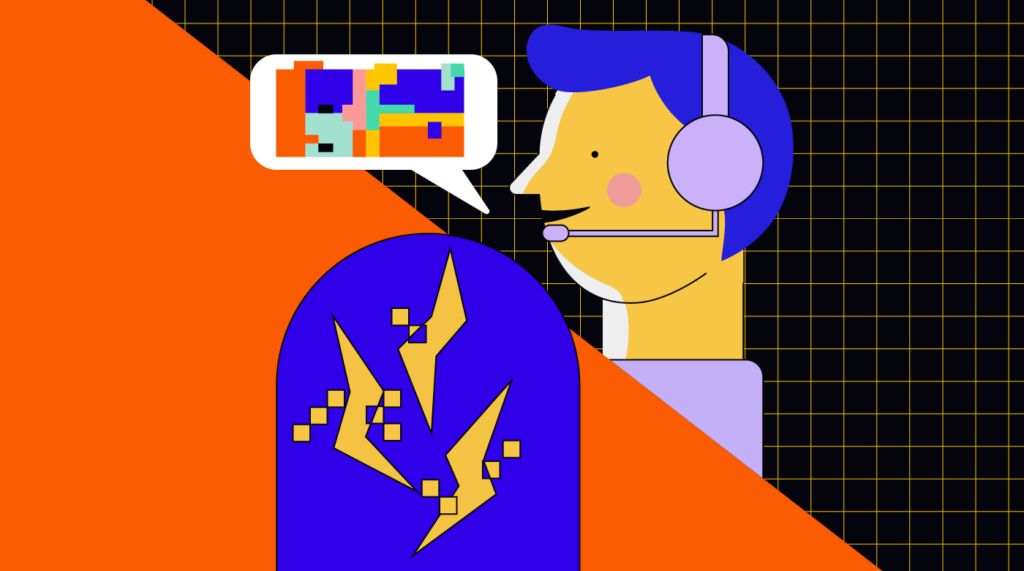C-Suite Sales Pitch: Proactively setting expectations in service contexts can immediately reduce dropped/abandoned contacts and improve both FCR (First Contact Resolution) and NPS. Over the longer term this no-cost strategy will reduce customer churn and grow LTV.
Customers can be extremely forgiving or extremely unforgiving. In the context of customer service, there’s little ground in between.
Whether you manage a call center team or monitor CX with an experience platform, you’ve seen evidence of these two extremes: customer feedback tends to clump around the two farthest ends of the satisfied-unsatisfied spectrum. One small process change is often all it takes to nudge customers from “extremely unsatisfied” all the way over to “extremely satisfied”.
Setting expectations for the time a service interaction will require is one such change that can have a huge impact on customer satisfaction. And importantly, if redundantly, “setting expectations” means informing the customer before the interaction begins.
Simple Service Request Leads To Unexpected Holding Pattern
I recently booked a flight across the country and wanted to bring my small dog. This required I contact the airline and add him to the reservation– to ensure no cats were in the same row, I guess.
So I called the airline and the IVR said there’d be a thirty-minute wait before an agent could speak with me. No problem. That is exactly the kind of expectation-setting we’re talking about!
But then I was offered an alternative to waiting on hold. Typically, this is where the phone system would offer callback, which I would have happily chosen. But this time the IVR offered something new: The option to have an agent text me directly to complete the request over SMS. Sweet, I like new things and texting is always fast; let’s do that!
The Very Slow Decent
One minute later an agent texted me to ask how they could help. One minute! See? I knew this would be fast! I immediately replied that I needed to add my dog to my reservation.

Five minutes later the agent replied to ask the dates of travel and where I was traveling to and from. Now, they already had that information (from the phone number tied to my account) but I replied immediately confirming travel dates and destination.
Twelve minutes later the agent texted back to ask about my dog’s breed, size and age. Again, I replied immediately.
Twenty minutes later the agent texted back, asked about the size of my dog’s carrier, and what material it was made of. Again, phone still in hand, I replied immediately.
Unsure if there’d be any follow-up questions I sat, waiting, afraid I’d miss a message and lose my place in line or get disconnected.
Eighteen minutes passed before I heard from the agent again. This time, thankfully, confirming that my reservation had been updated.
Altogether, the agent and I were engaged for 56 minutes. That’s a long time. It felt even longer. It was certainly longer than if I’d waited on hold, or chosen callback, where the agent could have resolved the request within a few minutes of speaking to me.
What The CX Flight Data Recorder Says
I’ll admit, when it comes to service interactions, I can be as impatient as a dog when it’s two minutes past dinnertime.

I’ll also admit that when texting with friends and family, I don’t think twice about delayed replies. That’s kind of the point of text messaging. That’s what makes it “asynchronous”. We don’t know what the person on the other end is busy doing, so we try to take a “they’ll reply when they reply” attitude.
But people have different expectations for customer service interactions. I expected that once the agent engaged me over text, then the issue would be quickly resolved. But in reality and behind the scenes I learned (by asking) that the agent was busy juggling “about twenty” interactions at once.
My frustration and impatience could have been avoided with one simple process change. Let’s look at that process change in a context that’s closer to home.
How SaaS Companies Should Approach Asynchronous Service
Text messaging, email and social media messaging are all important channels to include in your omnichannel customer service strategy. All have been described as asynchronous channels. But that does not mean all should be managed the same. Customers have different preferences and different expectations for each channel.
As a CX Leader, your job is to understand those preferences and expectations and adjust your channel strategy accordingly. We’ll reserve those 747-sized topics for future articles, but for now, a quick rule of thumb:
Of all the customer service channels, the only one that can truly be viewed as asynchronous is email. Unless stipulated in your SLA, or contradicted by your customer research, then few customers expect immediate responses or immediate follow-ups to emailed service inquiries.
Service over text can cut costs and– by offering customers another channel– actually improve CX. But if implemented poorly, it can also be a CX killer. To avoid killing CX with text interactions, make this one simple process change. On the first text you send out, state clearly that:
- The time between questions and replies can and will vary
- There is no need for the customer to wait by the phone for every reply
- They won’t be “disconnected” even if their own response is delayed
- They can continue the conversation at any time and it would pick up where it left off
Correctly balancing resources while managing customer expectations means omnichannel service can cut service costs while at the same time improving CX. And that’s the holy grail for every CX Lead. But as with everything CX, to avoid unnecessary turbulence, design and deploy it with a customer-first mindset.
Click here to reserve your First Class seat on our bi-weekly newsletter!

